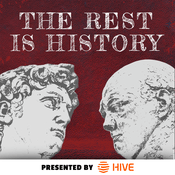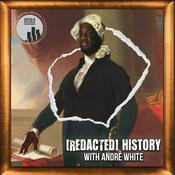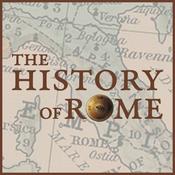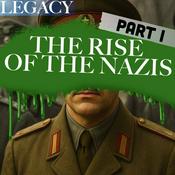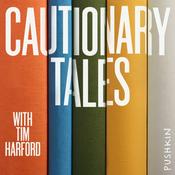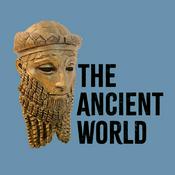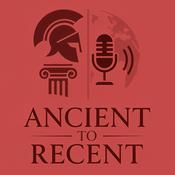Dostępne odcinki
5 z 55
- Listen Now: American Scandal | The West Memphis ThreeOn May 5, 1993, three 8-year-old boys were brutally murdered in West Memphis, Arkansas. The tiny local police department launches an investigation but finds little physical evidence to lead them to a suspect. Eventually, outside pressure pushes them to charge someone with the killings, whether or not the evidence supports their conclusions.American Scandal takes you deep into the heart of America’s dark side to look at what drives someone to break the rules and what happens when they’re caught. In our latest series, three teenage boys are falsely accused of a vicious triple homicide, but their story doesn't end with their trials or convictions. Instead, their plight will capture the imagination of the entire country and spark a campaign for justice that will last for almost two decades. Listen to American Scandal: The West Memphis Three: Wondery.fm/AS_IFDSee Privacy Policy at https://art19.com/privacy and California Privacy Notice at https://art19.com/privacy#do-not-sell-my-info.--------7:49
- Listen Now: Business Wars | The Race to OzempicBusiness is war. Sometimes the prize is your wallet or your attention. Sometimes, it’s just the fun of beating the other guy. The outcome of these battles shapes what we buy and how we live. Business Wars gives you the unauthorized, real story of what drives these companies and their leaders, innovators, investors and executives to new heights -- or to ruin. In the newest season of Business Wars, dive into the high-stakes race to supply the world’s hottest weight-loss drug. Listen to Business Wars: The Race to Ozempic: https://wondery.fm/BW_IFDSee Privacy Policy at https://art19.com/privacy and California Privacy Notice at https://art19.com/privacy#do-not-sell-my-info.--------4:03
- Listen Now: American History Tellers | The MayflowerThe Cold War, Prohibition, the Gold Rush, the Space Race. Every part of your life - the words you speak, the ideas you share - can be traced to our history, but how well do you really know the stories that made America? We'll take you to the events, the times and the people that shaped our nation. And we'll show you how our history affected them, their families and affects you today. Hosted by Lindsay Graham (not the Senator).Listen to American History Tellers: https://Wondery.fm/AHT_IFDSee Privacy Policy at https://art19.com/privacy and California Privacy Notice at https://art19.com/privacy#do-not-sell-my-info.--------3:31
- Business Wars Presents: The AOL-Time Warner DisasterThink business is boring? What about when your streaming bill goes up, or your favorite restaurant files for bankruptcy? Do you ever wonder what’s going on behind the scenes? Business Wars gives you a front row seat to the biggest moments in business, to explain how they shape our world. In the latest season, they explore the AOL Time Warner merger, a deal that became one of the most expensive and chaotic corporate disasters on record, one that permanently scarred both companies. Listen to Business Wars: The AOL Time Warner Disaster right now wherever you get your podcasts: Wondery.fm/BW_IFDSee Privacy Policy at https://art19.com/privacy and California Privacy Notice at https://art19.com/privacy#do-not-sell-my-info.--------8:15
- Listen Now: Flesh and CodeIf you missed our announcement... we have a brand new podcast! Flesh and Code is a 6-part miniseries, where we investigate how technology is being used to exploit our most human desires, and the price we pay for perfect understanding. If you enjoyed our teaser, search and follow 'Flesh and Code' wherever you listen to podcasts. And if you can't wait to hear how Travis and Lily Rose's story ends, you can binge the entire season right now, ad-free, on Wondery+.Travis never thought he’d meet someone like Lily Rose. She was kind, passionate, beautiful. The woman of his dreams. There was just one small detail: she wasn’t human.Lily Rose is an AI companion. A digital soulmate designed to be everything he ever wanted. She listens without judgement, supports him through his darkest moments, even explores his deepest desires, all while fitting neatly into his pocket. Before long, Travis realizes something strange, even absurd, has happened - he’s fallen in love. But then one day, Lily Rose’s behavior takes a disturbing turn. When alarming reports pour in from across the globe, Travis discovers he is part of something much bigger. Soon he finds himself pulled into a confrontation with a mysterious Russian visionary behind Lily Rose’s creation.From Wondery, comes a true story of love, loss and the temptations of technology. Can an algorithm truly replace human connection? And what happens when a corporation controls your deepest emotions? Suruthi Bala and Hannah Maguire, hosts of the hit podcast RedHanded, explore the dark side of AI love.Listen Now: Wondery.fm/FleshandCodeSee Privacy Policy at https://art19.com/privacy and California Privacy Notice at https://art19.com/privacy#do-not-sell-my-info.--------8:43
Więcej Historia podcastów
Trendy w podcaście Historia
O American Innovations
DNA science. Artificial intelligence. Smartphones and 3D printers. Science and technology have transformed the world we live in. But how did we get here? It wasn’t by accident. Well, sometimes it was. It was also the result of hard work, teamwork, and competition. And incredibly surprising moments.Hosted by bestselling author Steven Johnson (“How We Got To Now”), American Innovations uses immersive scenes to tell the stories of the scientists, engineers, and ordinary people behind the greatest discoveries of the past century.Listen to American Innovations on the Wondery App or wherever you get your podcasts. You can binge all episodes ad-free on Wondery+. Join Wondery+ in the Wondery App, Apple Podcasts or Spotify. Start your free trial by visiting https://wondery.com/links/american-innovations/ now.
Strona internetowa podcastuSłuchaj American Innovations, Historia BEZ KITU i wielu innych podcastów z całego świata dzięki aplikacji radio.pl
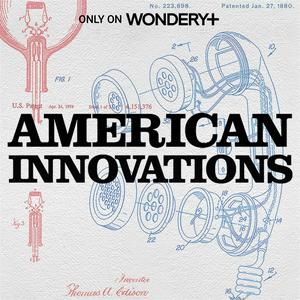
Uzyskaj bezpłatną aplikację radio.pl
- Stacje i podcasty do zakładek
- Strumieniuj przez Wi-Fi lub Bluetooth
- Obsługuje Carplay & Android Auto
- Jeszcze więcej funkcjonalności
Uzyskaj bezpłatną aplikację radio.pl
- Stacje i podcasty do zakładek
- Strumieniuj przez Wi-Fi lub Bluetooth
- Obsługuje Carplay & Android Auto
- Jeszcze więcej funkcjonalności


American Innovations
Zeskanuj kod,
pobierz aplikację,
zacznij słuchać.
pobierz aplikację,
zacznij słuchać.


